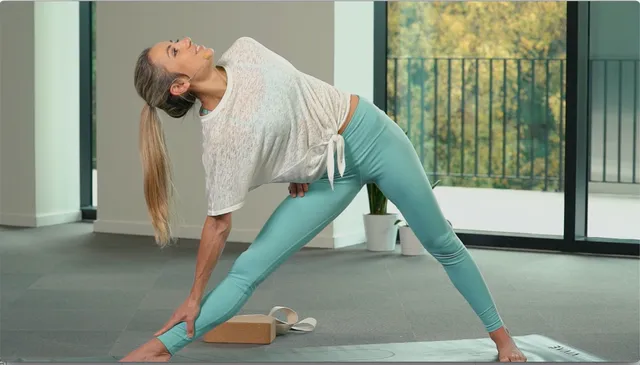
OPENING OF THE SCAPULAR BELT
In this sequence, we work THE SHOULDERS AND THE SHOULDER BELT because good parallelism between the shoulder and pelvic girdles and good placement in relation to the vertebral axis of the body allows easy and more harmonious movements and develops the quality of the postures.
The pelvis and lower limbs maintain balance and movement and the shoulders and upper limbs ensure fluidity and expression with a key tool: the hands.
In certain postures which go against our nature to have the head up, the shoulder girdle also becomes the base of inverted postures such as Sirsasana, Adho Mukha Vriksasana, etc.
The shoulder girdle being almost just placed on the thorax must have strong muscles all around in order to keep it stable and to correctly follow all the elements of the body which are involved in an arm, shoulder or upper back movement, these are all connected. During these movements, strong muscles prevent muscle contractures which create imbalances in this whole. Yoga postures also develop mobility and awareness of the shoulders (such as Gomukhasana).
The complex joint of the shoulder, being poorly interlocked and yet very stressed in everyday life, must find precise and conscious areas of work to avoid injury.
Adho Mukha Svanasana, the downward facing dog pose is a posture which easily indicates to the teacher whether both sides of the body are working equally , whether the shoulder and pelvic girdles are parallel and where the muscular and bony resistances of the body are.
Working on the shoulders and shoulder girdle opens the heart chakra, Anahata, which symbolically connects the Earth and the sky. This opening helps reduce feelings of chest tightness and blocked diaphragm, tension in the shoulder girdle and increases energy. Anahata being well balanced, the subject will be more open to others and will develop his confidence in himself and towards others . Forgiveness, gratitude and giving are attitudes that also open the heart chakra.
The clavicle is a key, as Annick de Souzenelle explains to us in “the symbolism of the human body”, a key to open a new door upwards. From a correct attitude of the shoulder girdle comes an opening, a better posture of the head, a better field of vision. The eyes then sweep widely across the horizon like the rays of a lighthouse on the sea. The mind unfolds, the heart opens. Isn't this region related to the heart, throat and forehead chakras!
Access the annotated class sequence with posture images and join the community of teachers!